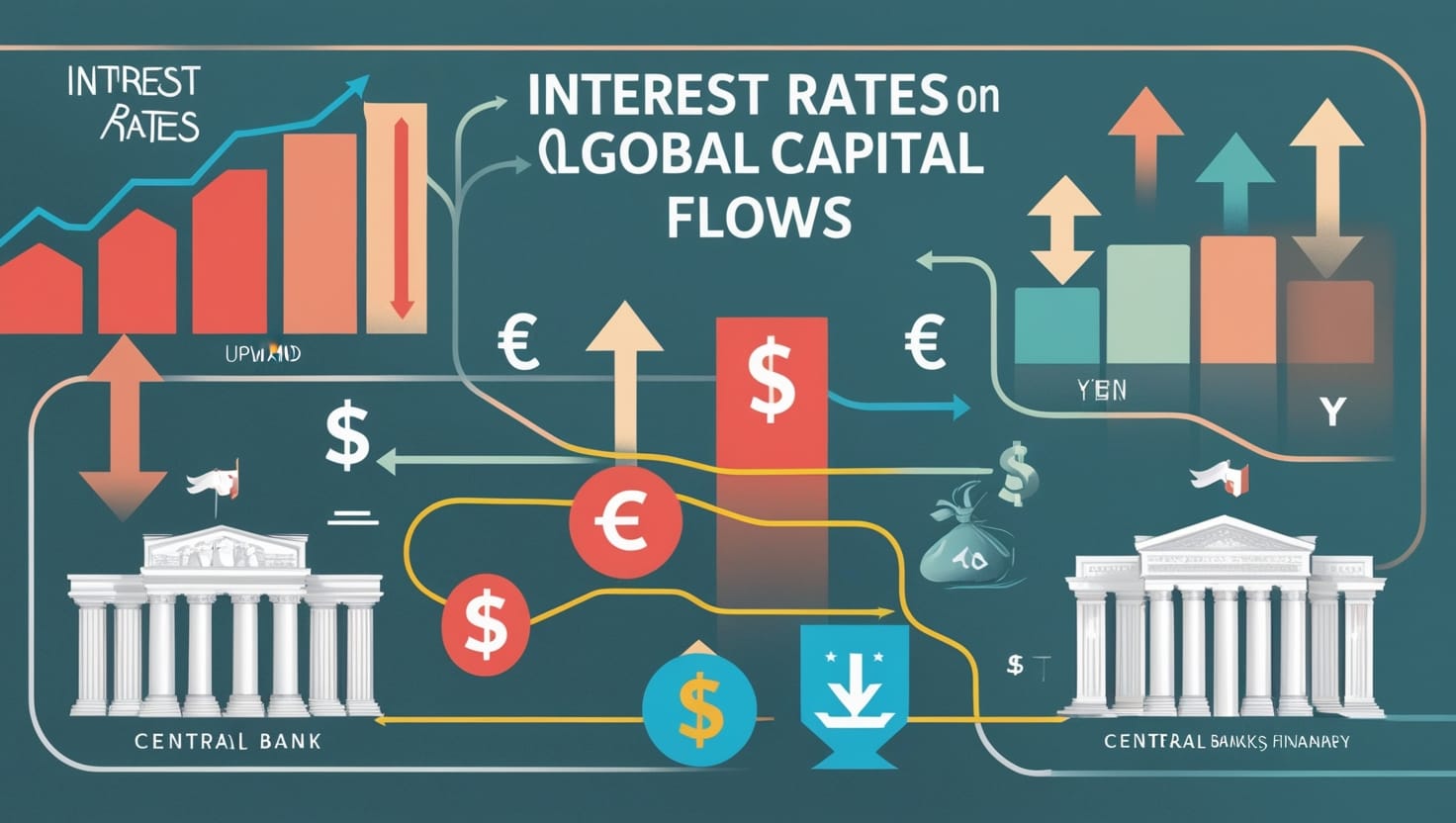
Let us explore how interest rate cycles act as a critical economic indicator influencing global capital flows, shaping investments, and driving financial strategies across markets
Interest Rates are one of the most fundamental aspects of monetary policy, and they always play a major part in determining economic and financial decisions around the globe. The most fundamental definition of interest rate could be the cost of borrowing money, which impacts a large canvas from corporate investments to consumer buying choices.
Central Banks’ actions to tweak or adjust interest rates are called interest rate cycles. Cycles refer to the phase of increasing, stabilizing, and reducing interest rates, which impact economic factors like spending, inflation, and growth. From a global financial perspective, this cycle is paramount as it affects the flow of capital from one border to another. For example, a higher interest rate regime in one nation can attract foreign investors who seek better returns, while a lower interest rate regime might lead them to look for opportunities elsewhere. This movement of capital or money impacts macroeconomic factors like inflation, employment, public and private spending, stock markets, exchange rates and the financial stability of economies.
This article explores the relationship between interest rate cycles and global capital movement. In an interconnected global financial landscape, how monetary policy decisions influence economies is what we are trying to explore. Let us straightway dive into the topic:
Role of Central Banks:
Central banks utilize interest rates as a crucial measure to control inflation and manage economic activity. When central banks tweak the interest rate, it impacts the cost of borrowing for financial institutions, consumers and business houses.
When inflation rises, central banks increase interest rates which makes borrowing expensive. This activity aims to curb investment and spending by consumers and businesses and control demand that puts a brake on inflation. Higher interest rates dissuade consumers from making large purchases that require loans like homes or cars. Corporations postpone their investments due to higher borrowing costs. This scenario dampens consumer sentiment and in turn, reduces inflation. Higher interest rates also might create a propensity for individuals to park their additional funds in savings accounts for risk-free returns.
Central banks aim to strike a balance between fostering growth and controlling inflation. High inflation reduces purchasing power and impacts economic stability. Mild inflation points to a healthy economy with good investment, spending and growth. Low inflation fosters economic growth as it leads to predictable pricing and stimulates demand.
Impact of Interest Rates on Capital Flows:
Interest rate changes have a significant say in determining foreign investment especially, in Bonds and Stocks.
Bonds:
For instance, when a central bank raises interest rates, bond yields increase making it more attractive for foreign investors seeking higher returns. On the contrary, when interest rates decline, bond yields decrease and investors tend to pull out capital for more attractive opportunities elsewhere. The coupon rate of the bond which depicts the fixed interest payment becomes less attractive if the prevailing interest rate of the country rises above it. This reduces the demand for those bonds. This interplay of adjustment in interest rates and the coupon rate of the bond during its issue plays a significant role in the supply and demand for bonds. Bond prices and yields are inversely proportional to each other. When rates increase, new bonds offer higher yields reducing demand for the older bonds with lower coupon rates. This leads to a price dip in the older bonds due to oversupply. When rates decline, bonds issued earlier with better coupon rates become valuable and their prices increase.
Stocks:
The relationship between stock prices and interest rates is more complex. When rates increase, companies often face higher borrowing costs which impacts their profitability and consequently stock prices. Increased rates might also create a propensity among investors to move capital away from stocks to attractive yield-posing bonds. The risk-adjusted return on bonds becomes more attractive. Investors reallocate their capital which impacts stock demand and creates a downward price pressure. Higher interest rates shrink profitability and reduce future earnings, creating valuation pressure that further reduces the stock price to justify earnings. Such a scenario creates volatility in markets due to portfolio restructuring by institutional investors who alter asset flow from one instrument to another. Sector rotation can be witnessed during this period as capital might be deployed into sectors where higher interest rates increase earnings per share(EPS).
This behaviour of institutional investors is typically referred to as the “search for yield” phenomenon which often leads to capital flows from economies with lower interest and yields to economies with higher ones. This leads to a dynamic flow of capital from one border driven by interest rate differentials. Capital inflows due to attractive interest rate regimes lead to economic growth boosting investment and economic spending. However excessive capital inflows lead to inflationary pressure due to increased demand for goods and services stimulated by foreign in-flow. In case there is the slightest hint of political instability and unviable government policies then a sudden capital reversal leads to currency devaluation and subsequent volatile economic environment. So such ambiguities are usually carefully considered by Central banks while navigating the twin elephants – Growth and Inflation. The level of interest rate within a country plays a significant role in influencing its currency value in the foreign exchange market. This is the reason central banks carefully consider currency levels when setting monetary policy as forex rates further affect the macro-economic indicators – investment returns, consumer prices and jobs growth.
Conclusion:
Understanding interest rate cycles is critical for understanding the role of central banks in influencing global capital flows and hence economic activity. From rate hikes to cuts, each phase plays its part in shaping economic decisions and financial markets. The influence of the interest rate cycle is critical for understanding the capital inflow between emerging market economies(EMEs) and the US. Additionally, institutional investors also implement strategies for currency hedging to navigate a volatile interest rate environment.






